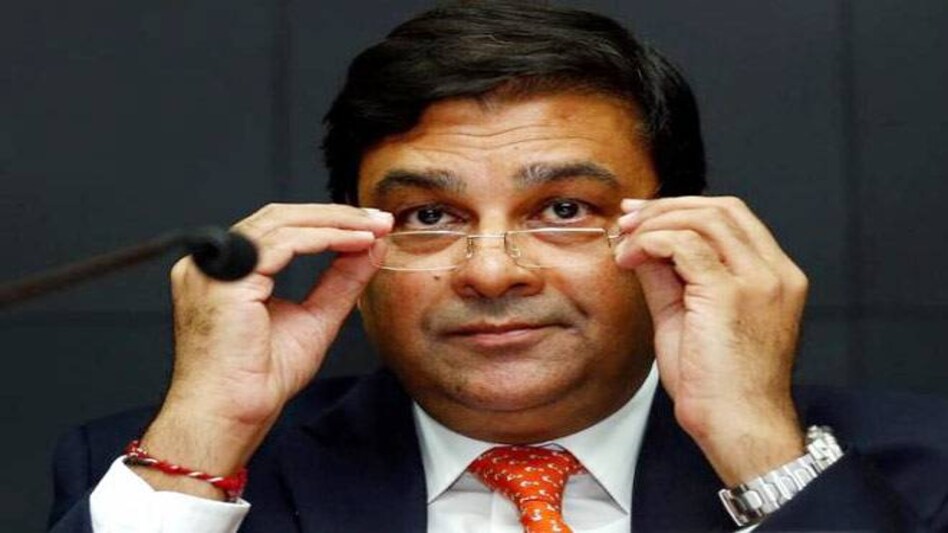 RBI governor Urjit Patel
RBI governor Urjit Patel RBI governor Urjit Patel
RBI governor Urjit PatelThe Reserve Bank of India monetary policy committee (MPC) is widely expected to cut repo rate and adopt a growth supportive stance today. This will be RBI governor Urjit Patel's second monetary policy. We look at why RBI is expected to cut repo rate by 25 bps to a six-year low in its bi-monthly monetary policy review.
Low inflation: Wholesale prices inflation fell for the second month in October as food articles, led by vegetables, saw softening of prices.
The WPI inflation fell to 3.39 per cent in October compared with 3.57 per cent in September. In October 2015, WPI inflation was (-) 3.70 per cent.
Retail inflation too eased for a third straight month in October. Retail inflation for the month came at 4.20 per cent, a 14 month-low compared to 4.31 percent on a month-on-month basis.
Demonetisation effect on earnings: The demonetisation move led to cash shortage across sectors of the economy. Analysts estimate that Q3 earnings of India Inc will take a hit due to the move.
Brokerage Motilal Oswal has measured the impact of note ban move on corporate earnings.
"Against the current backdrop, we expect October-December quarter earnings to be impacted the most," Motilal Oswal said in report titled Demonetisation: Feedback from the Ground Zero.Noting that with uncertainty surounding the duration of liquidity recalibration, it was difficult to quantify the earnings impact, the brokerage said, "post demonetisation, there were obvious downside risks to 2016-17 earnings estimates".
"We believe autos, FMCG, retail, consumer durables, mid-caps, cement, telecom and NBFCs could see earnings downgrades for 2016-17," it added.
ALSO READ: Demonetisation: Govt may not extend Dec 30 deadline for old note deposits
Economic growth: Though the economy reported a healthy 7.3 per cent growth in the second quarter but economists paint a bleak picture of the note ban move on the growth outlook in the near term. According to estimates, the note ban will lead to downside risks to growth at least for the next two quarters. International agencies have lowered the GDP growth forecast on the demonetisation move.
Fitch Ratings lowered India's GDP growth forecast for this fiscal to 6.9 per cent from 7.4 per cent, saying there will be temporary disruptions to economic activity post demonetisation. It said economic activity will be hit in the October- December quarter because of the cash crunch created by withdrawal and replacement of 500 and 1000 rupee notes that accounted for 86 per cent of the value of currency in circulation.
Deutsche Bank in a report said: The country's real GDP growth is expected to slow to 6.5 per cent in the current fiscal on the likely impact of demonetisation, while muted inflation may open room for additional rate cuts. "We expect growth to be impacted adversely in the present and next quarters due to the government's temporary demonetisation initiative," the note said.
Goldman Sachs too slashed its forecast for GDP growth to 6.8% for the current fiscal.
Mumbai-based Ambit Capital has forecasted that GDP would grow only by a meagre 3.5% in the current fiscal. Deutsche Bank, too, cut its GDP growth forecast for India by 100 basis points to 6.5% in the current fiscal.
The note ban move led the services sector to contract in November - that too at sharpest rate in three years - as new orders fell for the first time since June 2015 though subdued inflationary pressure opened up room for RBI to lower rates, a monthly survey showed. The Nikkei India Services Purchasing Managers' Index (PMI), which tracks services sector companies on a monthly basis, stood at 46.7 in November, down from 54.5 in October.
A reading above 50 means the sector is expanding while a score below this mark signals contraction. The index has registered a contraction for the first time since June 2015 and marked the sharpest reduction in output in almost three years.